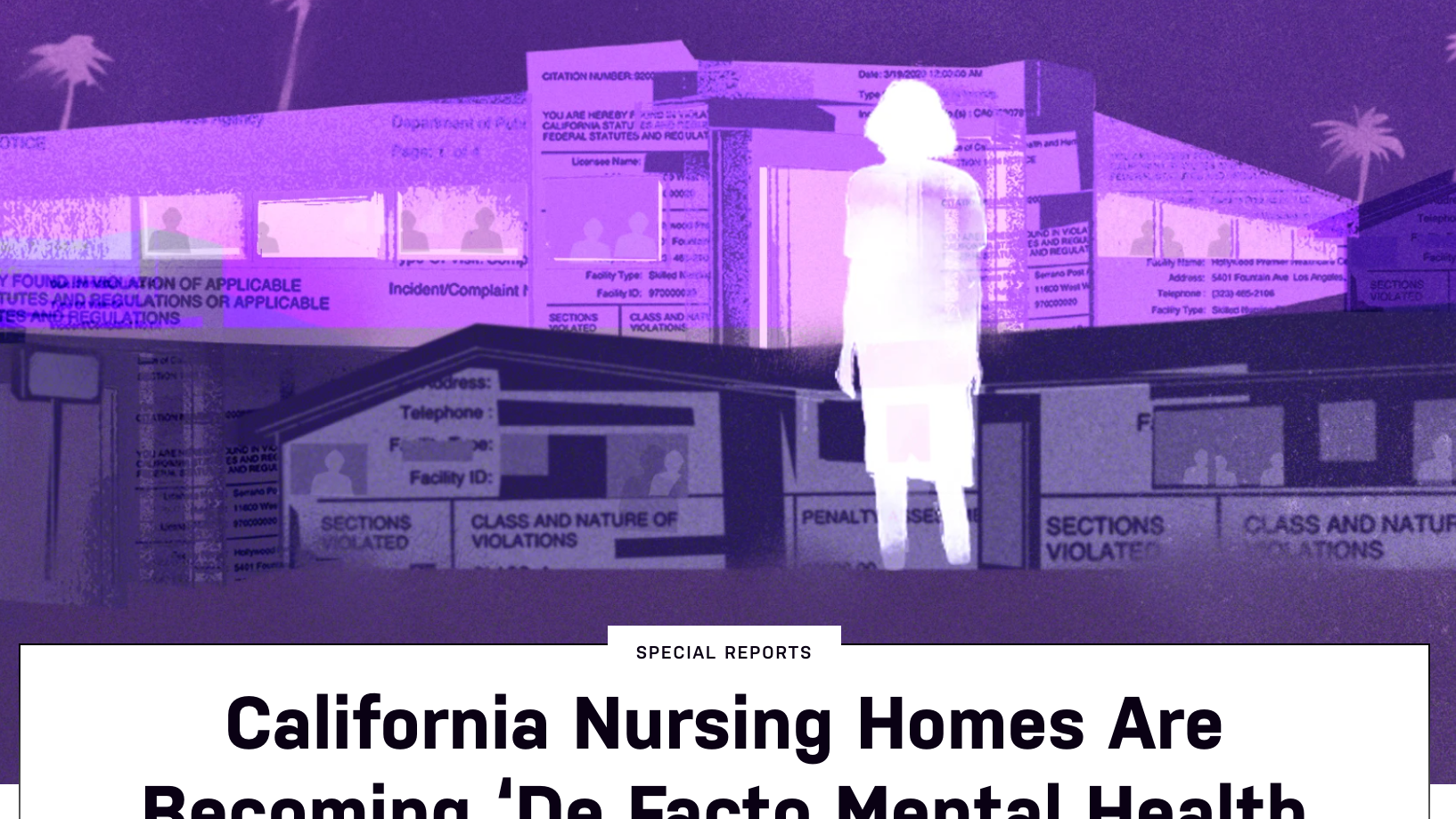Climate change is killing Americans.
Health departments aren’t equipped to respond
This collaboration between Columbia and CPI started with an investigation into how state and local health departments have responded to the health impacts of climate change. We found that the climate program at CDC designed to support health departments had been hampered by a decade of underfunding, limited expertise and political resistance. The tepid federal response left state and local health workers ill-equipped to act, exposing communities to under-appreciated threats that will only get worse. We used heat as a lens to illustrate these threats.
Excerpt below and full version published by the Center for Public Integrity. Condensed version co-published by The Guardian, The Nation, Mother Jones, Grist and others. Co-reported with Dean Russell, Veronica Penney, Ali Raj and Bridget Hickey.
[excerpt]
PHOENIX — Charlie Rhodes lived alone on a tree-sparse street with sunburned lawns just outside this Arizona city. At 61, the Army veteran’s main connection to the world was Facebook; often, he posted several times a day. But as a heat wave blanketed the region in June 2016 — raising temperatures among the highest ever recorded — his posts stopped. Three weeks later, a pile of unopened mail outside his door prompted a call to police.
When officers arrived, they were overcome by the odor of rotting garbage, worsened by the still-searing heat. Inside the home, they found the air conditioner broken and its thermometer reading 99 degrees. Rhodes lay dead in the bedroom, his body decomposing. The cause, his autopsy shows: “complications of environmental heat exposure.”
Yearly heat-related deaths have more than doubled in Arizona in the last decade to 283. Across the country, heat caused at least 10,000 deaths between 1999 and 2016 — more than hurricanes, tornadoes or floods in most years. [read more]
When officers arrived, they were overcome by the odor of rotting garbage, worsened by the still-searing heat. Inside the home, they found the air conditioner broken and its thermometer reading 99 degrees. Rhodes lay dead in the bedroom, his body decomposing. The cause, his autopsy shows: “complications of environmental heat exposure.”
Yearly heat-related deaths have more than doubled in Arizona in the last decade to 283. Across the country, heat caused at least 10,000 deaths between 1999 and 2016 — more than hurricanes, tornadoes or floods in most years. [read more]
--------------------------------------------------------------------
Dangerous Heat, Unequal Consequences
In Florida and Arizona, heat hits hardest in lower-income ZIP codes. For the story, "Dangerous Heat, Unequal Consequences", I analyzed patient-level data from the Healthcare Cost and Utilization Project. I selected just those patients who had been given a heat-related diagnosis and then aggregated by ZIP code. In addition to being low-income, the ZIP codes in each state with the highest rate of heat illness also have a history of segregation and high rates of co-morbidities. An overview of the methodologies I used for this and other analyses in the article is available here.
While scientists and journalists have examined vulnerability factors to heat at this level, this is the first example of publicly available, ZIP-code-level data on heat illness rates, as far as I know.
The analysis was also used in stories by Erin Stone at the Arizona Republic and Naseem Miller at the Orlando Sentinel to explore other areas with high heat illness rates. With them, we published the ZIP-code-level data as interactive maps with Datawrapper.
While scientists and journalists have examined vulnerability factors to heat at this level, this is the first example of publicly available, ZIP-code-level data on heat illness rates, as far as I know.
The analysis was also used in stories by Erin Stone at the Arizona Republic and Naseem Miller at the Orlando Sentinel to explore other areas with high heat illness rates. With them, we published the ZIP-code-level data as interactive maps with Datawrapper.
Excerpt below, published by the Center for Public Integrity. Also co-published by Mother Jones, The Arizona Republic and Orlando Sentinel. Co-reported with Sofia Moutinho.



[excerpt]
Mario Wilcox won’t set out in the summer without an emergency kit in his car trunk: a cooler with an ice pack and a blanket. He learned this improvised life saver from his time in the Iraq and Afghanistan wars; ice and a wet cloth can cool down an overheated body. Now he finds it vital in the intensifying heat of Fort Pierce, Florida, and especially his heat-stressed neighborhood.
More than 2,000 miles away in Phoenix, Arizona, Grace Salinas monitors the street outside her window in a public housing complex when summer temperatures reach triple digits. A community leader in the area southwest of downtown, Salinas stocks cold water bottles for anyone she sees struggling with the heat, a situation growing more common each year.
More than 2,000 miles away in Phoenix, Arizona, Grace Salinas monitors the street outside her window in a public housing complex when summer temperatures reach triple digits. A community leader in the area southwest of downtown, Salinas stocks cold water bottles for anyone she sees struggling with the heat, a situation growing more common each year.
Heat-related illnesses are soaring in Arizona and Florida as the planet warms and temperatures rise. Among the hottest states in the country, none saw a sharper spike in summertime temperatures over the last century than these two.
Already, Arizona is considered the hottest state in the U.S., and Phoenix the hottest city, with more than 140 days over 100 degrees Fahrenheit last year alone. In Florida, the combination of heat and humidity makes it one of the nation’s most dangerous places, according to a recent study.
Poor communities are bearing the brunt of sickening heat in these states, an analysis by Columbia Journalism Investigations and the Center for Public Integrity found. Federal data capturing most emergency room visits and hospitalizations in Arizona and Florida reveal higher rates of heat-related illnesses in areas with less income.
Poor communities are bearing the brunt of sickening heat in these states, an analysis by Columbia Journalism Investigations and the Center for Public Integrity found. Federal data capturing most emergency room visits and hospitalizations in Arizona and Florida reveal higher rates of heat-related illnesses in areas with less income.
The data, never before made public at the ZIP code level, also show that the highest rates of heat-related illnesses are in neighborhoods with a history of racial segregation. Experts say racist policies of the past created conditions, never corrected, that make heat more dangerous for people there today. [read more]
--------------------------------------------------------------------
Climate casualties rising with temperatures
I teamed up with Robbie Parks, an environmental epidemiologist, to model how warming from climate change may be contributing to more heat-related deaths in Arizona. We found that the number of deaths associated with warmer-than-average temperatures has increased over time.
Excerpt below and full story at the Center for Public Integrity.
[excerpt]
More Americans die from heat than from hurricanes, tornadoes or floods. Under some future scenarios, climate warming could increase heat deaths in North America fivefold. But figuring out how often climate change has already been the culprit in such deaths takes a special kind of detective work.
Columbia Journalism Investigations and the Center for Public Integrity teamed up with Robbie M. Parks, an environmental epidemiologist at Columbia University’s Earth Institute, to look for clues in Arizona — where heat deaths are on the rise.
Parks recently published a study examining how unusual temperatures contribute to deaths from accidents and injuries. For our analysis, Parks adapted his model to estimate how many additional deaths — from any cause — occur during warmer-than-average months. The goal: pick out the signal of climate’s role in heat-related deaths from the “noise” of other risk factors. [read more]
Columbia Journalism Investigations and the Center for Public Integrity teamed up with Robbie M. Parks, an environmental epidemiologist at Columbia University’s Earth Institute, to look for clues in Arizona — where heat deaths are on the rise.
Parks recently published a study examining how unusual temperatures contribute to deaths from accidents and injuries. For our analysis, Parks adapted his model to estimate how many additional deaths — from any cause — occur during warmer-than-average months. The goal: pick out the signal of climate’s role in heat-related deaths from the “noise” of other risk factors. [read more]
--------------------------------------------------------------------
Deadly Bacteria in Coastal Waters Causes a Flesh-Eating Disease. Climate Change Is Making It Worse.
The rare but deadly Vibrio bacteria thrives in warm, brackish waters, as are seen in the summer in the Chesapeake Bay. Rising temperatures are leading to more time each year that people can be exposed to Vibrio. The three below graphics were made for the story, "Deadly Bacteria in Coastal Waters Causes a Flesh-Eating Disease. Climate Change Is Making It Worse.", published by Mother Jones and the Center for Public Integrity in partnership with Columbia Journalism Investigations and McClatchy Newspapers. They were also featured in a regional version of the story in McClatchy's papers in the Carolinas.

Our team calculated rates of Vibrio infections by county in North and South Carolina. Incidence of cases was much higher along the coasts.

In coastal areas adjacent to the open ocean, salinity is often too high for Vibrio bacteria. This graphic illustrates how heavy rain from hurricanes can change salinity conditions for weeks following a storm, introducing risk to Vibrio in places that don't usually have it.





